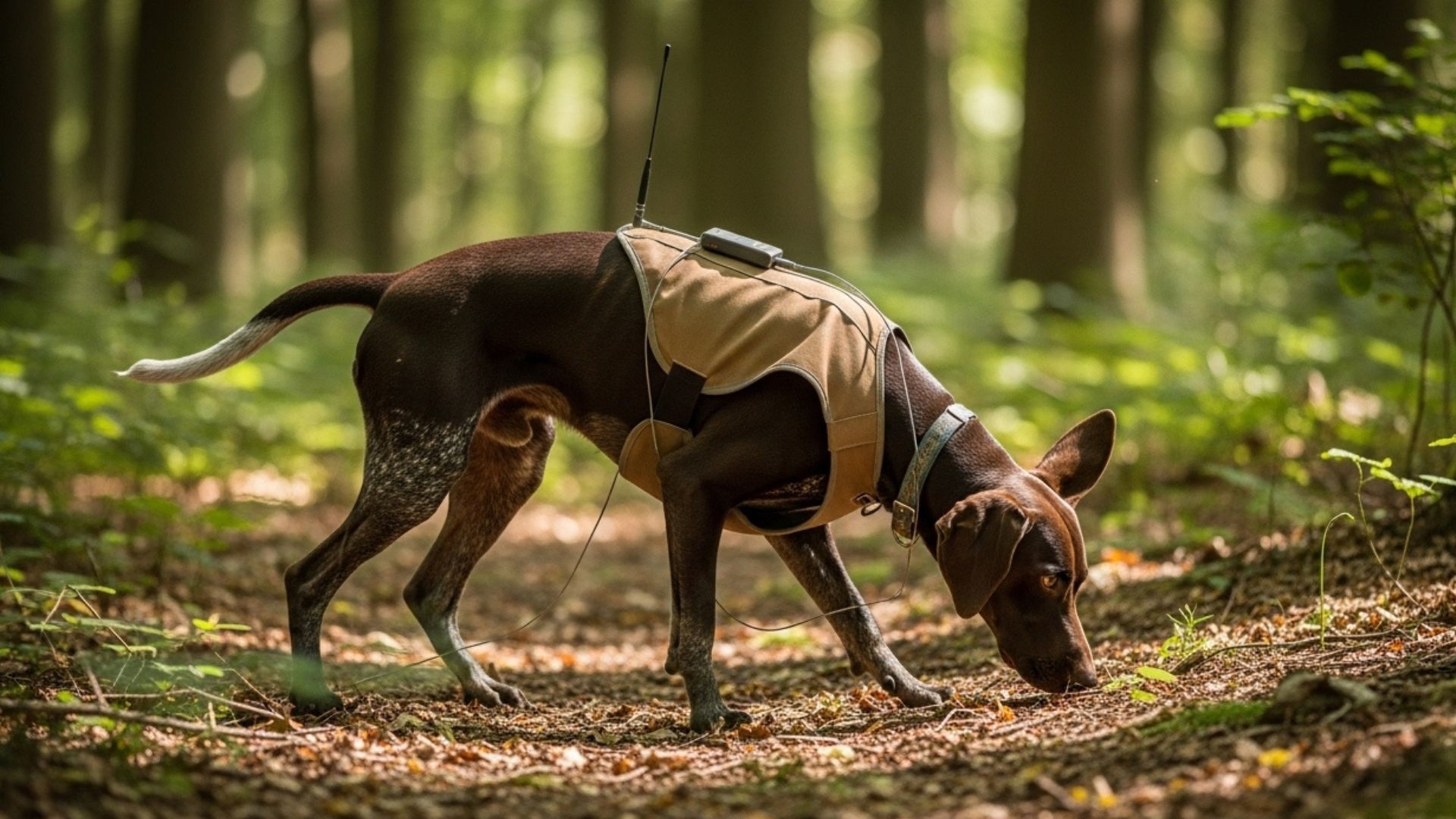For centuries, dogs have played an essential role in bird hunting, using their instincts, endurance, and sharp senses to assist hunters. Today, when combined with modern telemetry methods, the right dog breed can make bird tracking and retrieval not only more efficient but also more rewarding.
These dogs are more than hunting partners—they’re skilled workers whose heritage is deeply rooted in assisting humans in the field.
Breeds used for bird telemetry often fall into categories like pointers, flushers, and retrievers. Pointers signal the presence of game with remarkable precision, flushers drive birds into flight for the hunter’s shot, and retrievers excel at bringing birds back after the hunt.
Athleticism, intelligence, and a natural eagerness to work make these dogs stand out. Their dedication in the field is matched only by their loyalty at home.
Choosing the right dog for bird telemetry involves looking at temperament, trainability, and endurance. From seasoned retrievers to high-energy flushers, these breeds continue to demonstrate why they remain indispensable for bird tracking and hunting traditions worldwide. previous ones?
Best Dog Breeds for Bird Telemetry
1. German Shorthaired Pointer
The German Shorthaired Pointer (GSP), sometimes called the Deutsch Kurzhaar, is one of the most versatile hunting dogs in the world. With their sleek, short coat in liver, white, or roan patterns and their athletic, muscular frame, they are instantly recognizable in the field.
AKC says the German Shorthaired Pointer is a versatile, medium-sized hunting dog that excels in many tasks and thrives on vigorous exercise, positive training, and plenty of affection. Bred in Germany during the 19th century, the GSP was developed as an all-purpose hunting companion.
This breed belongs to the Sporting Group and has long been admired for its energy, intelligence, and adaptability. Their natural instincts allow them to excel as both pointers and retrievers, making them especially valuable for upland and waterfowl hunting. They’re lean but strong, capable of covering ground swiftly and tirelessly.
When it comes to bird telemetry, GSPs shine thanks to their sharp noses and disciplined pointing behavior. They don’t just chase scent—they stop and hold, signaling the bird’s location with precision until given a command. This allows hunters to track movements effectively and prepare for telemetry readings.
Another advantage is their stamina. GSPs are highly energetic and thrive in long, challenging hunts, maintaining focus over varied terrain. This endurance ensures that they can follow signals and scents for extended periods, a vital trait in telemetry work.
Finally, their eagerness to work closely with humans makes them highly trainable for specialized tasks. Whether flushing, retrieving, or aiding in tracking technology, the GSP consistently demonstrates why it remains one of the best bird telemetry partners.
Fun fact: Their tails are traditionally docked to about 40% of their length, a nod to their working heritage.
2. English Setter
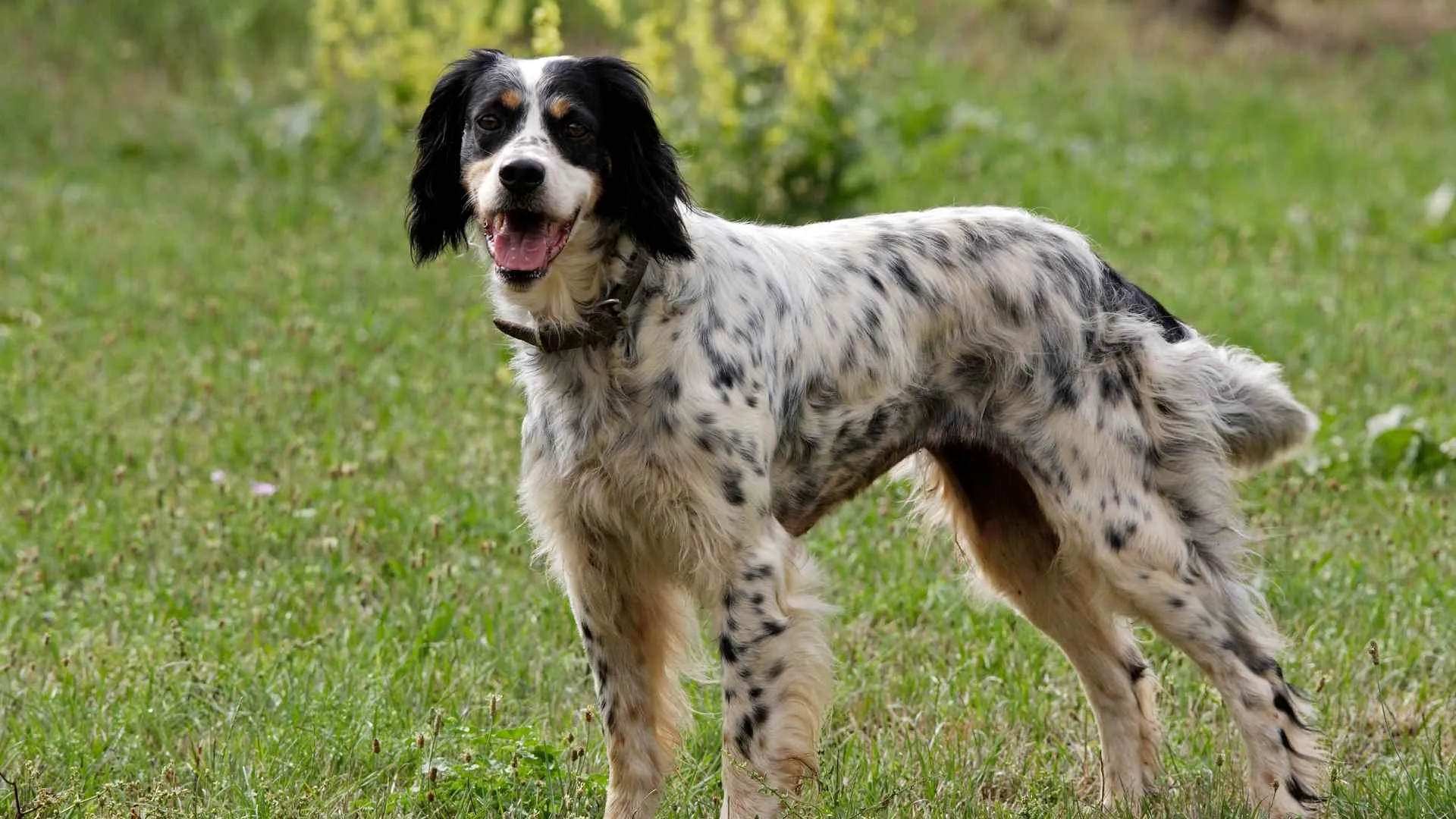
The English Setter, also called the Laverack or Llewellin Setter depending on bloodline, is a striking sporting breed known for its feathered, silky coat adorned with unique “belton” flecking in shades of blue, orange, liver, yellow, or tricolor.
Elegant yet sturdy, this medium-to-large dog belongs to the Sporting Group and has been valued for both its hunting skill and companionship for centuries. PetMD says English Setters are an active breed, but they usually have a gentle and friendly temperament.
Historically developed in England during the 19th century, the English Setter was refined to locate and assist in hunting game birds such as quail, grouse, and pheasant. Their strong build, fringed tail, and expressive eyes make them not only effective in the field but also beloved as family companions.
For bird telemetry, English Setters excel thanks to their natural pointing instinct and ability to locate birds over wide terrain. Their sweeping gait and high endurance allow them to cover ground efficiently, making them reliable for long hunts.
These setters are also prized for their keen sense of smell and adaptability, enabling them to work effectively in varying environments. Their intelligence ensures they can balance traditional hunting methods with modern telemetry tracking techniques.
Fun fact: The term “belton,” used to describe their flecked coat colors, originates from a village in Northumberland, England, where the pattern was first noted.
3. Irish Setter
The Irish Setter, also known as the “Red Setter,” is celebrated for its striking mahogany coat, long build, and graceful stride. Recognized in the Sporting Group, this breed stands out for its elegance as much as its energy. WebMD says Irish Setters are sporting dogs that make excellent family pets.
Bred in Ireland, these setters were originally developed as bird dogs, excelling in flushing and retrieving game birds. Their friendly temperament also made them popular as family companions alongside their hunting duties.
In the field, Irish Setters demonstrate remarkable stamina, covering wide ground efficiently while keeping within range—an essential trait for bird telemetry work. Their sharp instincts and fluid gait allow researchers to track avian movements effectively.
Their natural eagerness to please makes them easier to train in telemetry protocols, whether pointing, flushing, or retrieving. Combined with high endurance, they can handle long research outings across varied terrain.
Fun Fact: The Irish Setter’s stunning coat requires consistent grooming, but hunters and researchers alike often prize its beauty as much as the dog’s working ability.
4. English Springer Spaniel
The English Springer Spaniel, sometimes simply called “Springer,” emerged in England in the late 1800s. Its name comes from its ability to “spring” game birds from cover, a skill that quickly made it a favorite among hunters.
Distinguished by its double coat with feathering on the legs and chest, the Springer is an attractive yet functional sporting dog. Their sweet expression, long ears, and athletic build reflect their blend of charm and stamina, earning them a place in the Sporting Group of the AKC.
In bird telemetry, English Springer Spaniels excel as flushing dogs. They work within shotgun range, flushing birds into the air and then retrieving them—often seamlessly transitioning between both roles. Their energy and responsiveness ensure efficient teamwork in the field.
The best conditions for their performance include wide fields, wetlands, or wooded terrain where their natural drive to scour cover shines. They thrive when given tasks that allow both their retrieving instincts and close-contact hunting style to be fully utilized.
These dogs also adapt to modern tracking setups, working smoothly alongside telemetry devices. Their willingness to follow commands, eagerness to please, and stamina make them reliable partners for long hunting days.
Fun Fact: Springers are often described as “Velcro dogs” because of their tendency to stick close to their humans both in the field and at home.
5. Labrador Retriever
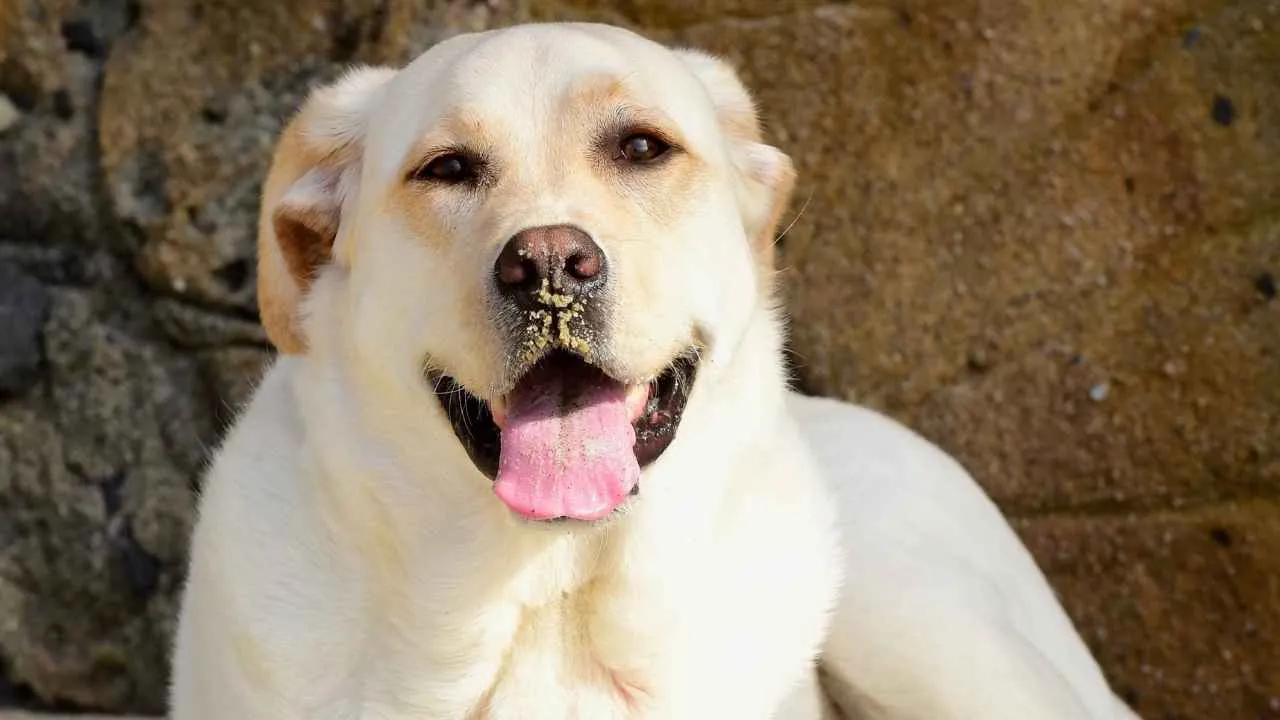
The Labrador Retriever, often called simply the Lab, is one of the world’s most recognized and versatile sporting breeds. Originally developed in the United Kingdom from Newfoundland’s St. John’s water dogs, it was bred as a gun dog to assist hunters in retrieving waterfowl.
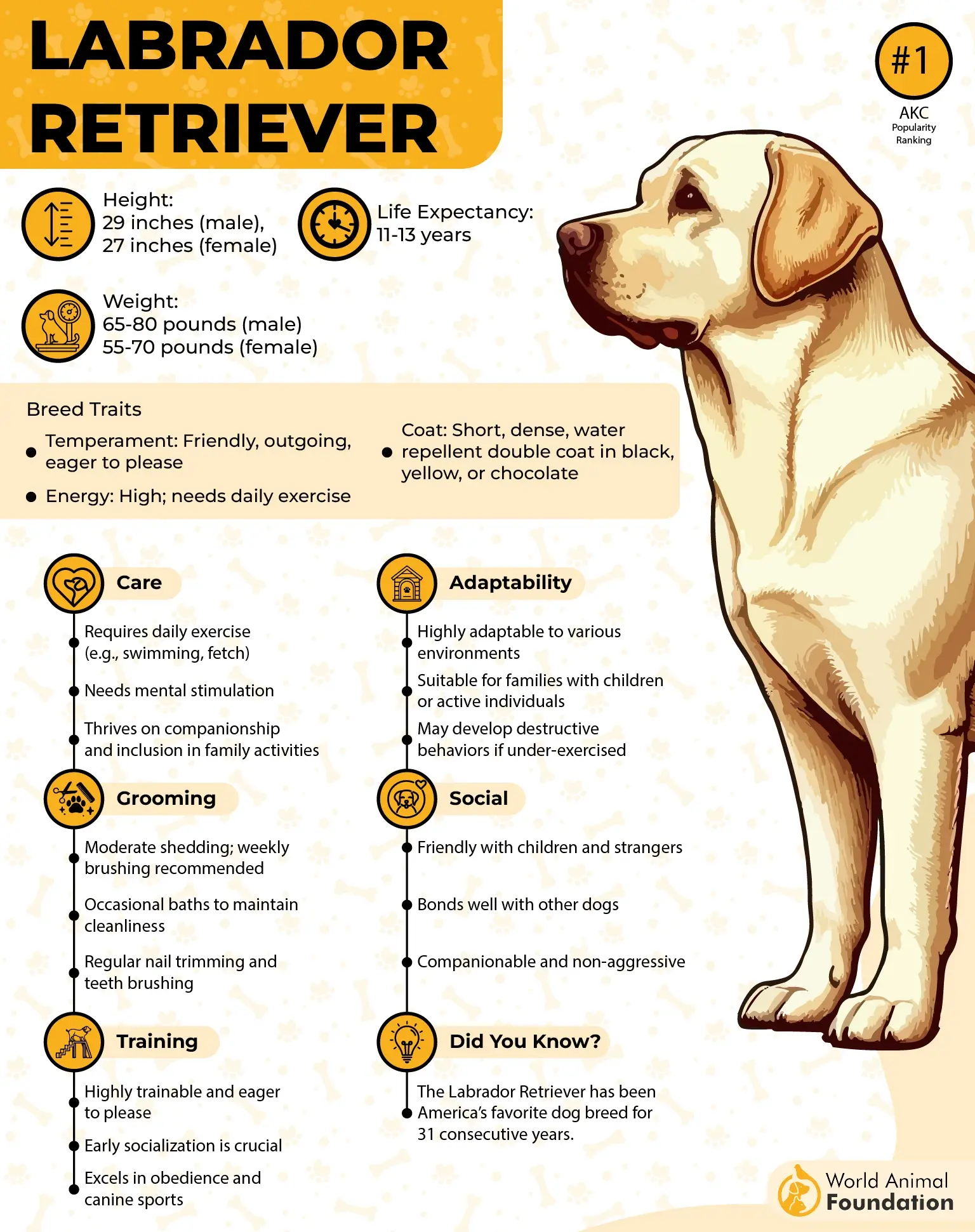
Today, the Lab is not only a top family companion but also an invaluable field partner. With its short coat in yellow, black, or chocolate, high energy, and eager-to-please nature, the breed combines both beauty and working ability in one dependable package.

What makes Labs exceptional for bird telemetry is their keen nose and drive. They excel in pheasant country, pushing through cattails, brush, or cornfields with determination to flush or track birds trying to escape on foot.
Their soft mouth and natural retrieving instincts ensure that downed birds are returned cleanly, a vital trait for hunters who rely on accuracy in recovery. Equally important, Labs work at a practical range, staying responsive to handlers in the field.
Steady, biddable, and adaptable, they thrive in both water and land conditions, making them reliable bird partners.
Fun fact: the Labrador Retriever has been America’s most popular dog for decades, a testament to its versatility at home and in the field.
6. Vizsla
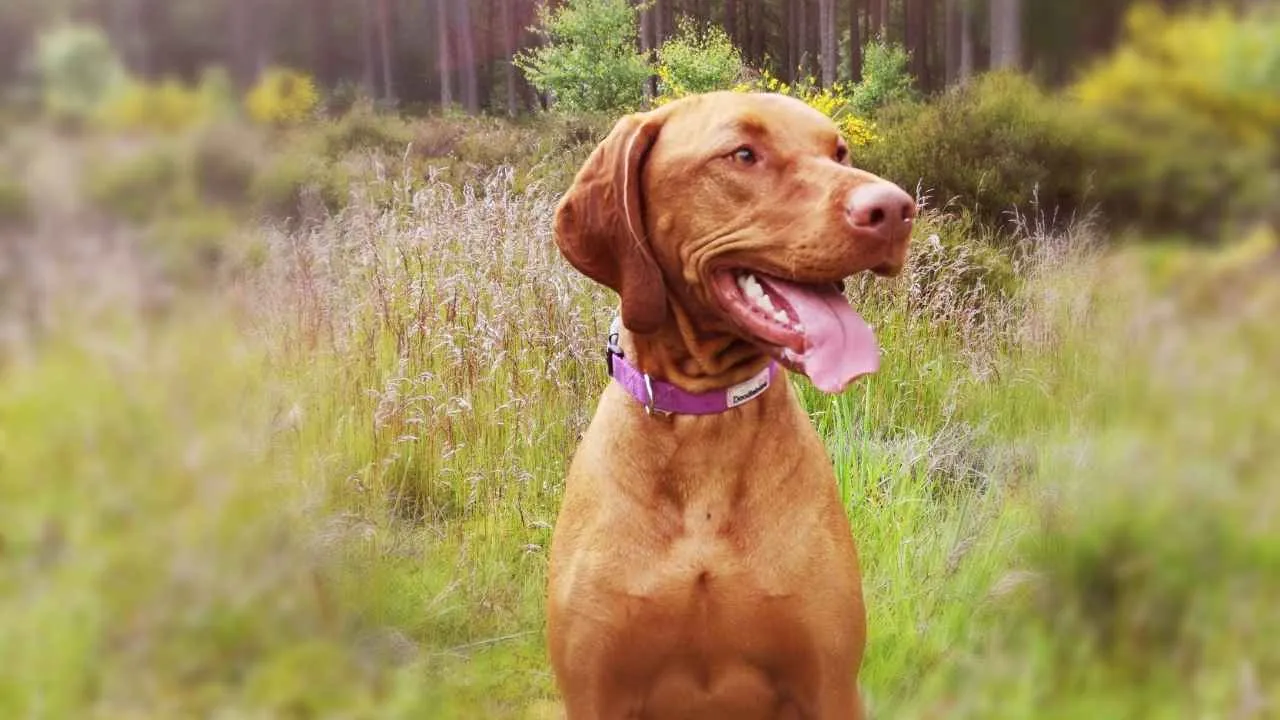
The Vizsla, also called the Hungarian Vizsla or Magyar Vizsla, is a graceful sporting dog with deep roots in Hungary, where it was originally bred for pointing and retrieving game. Known for its sleek rust-colored coat and athletic build, the breed remains one of the most elegant and versatile hunting companions.
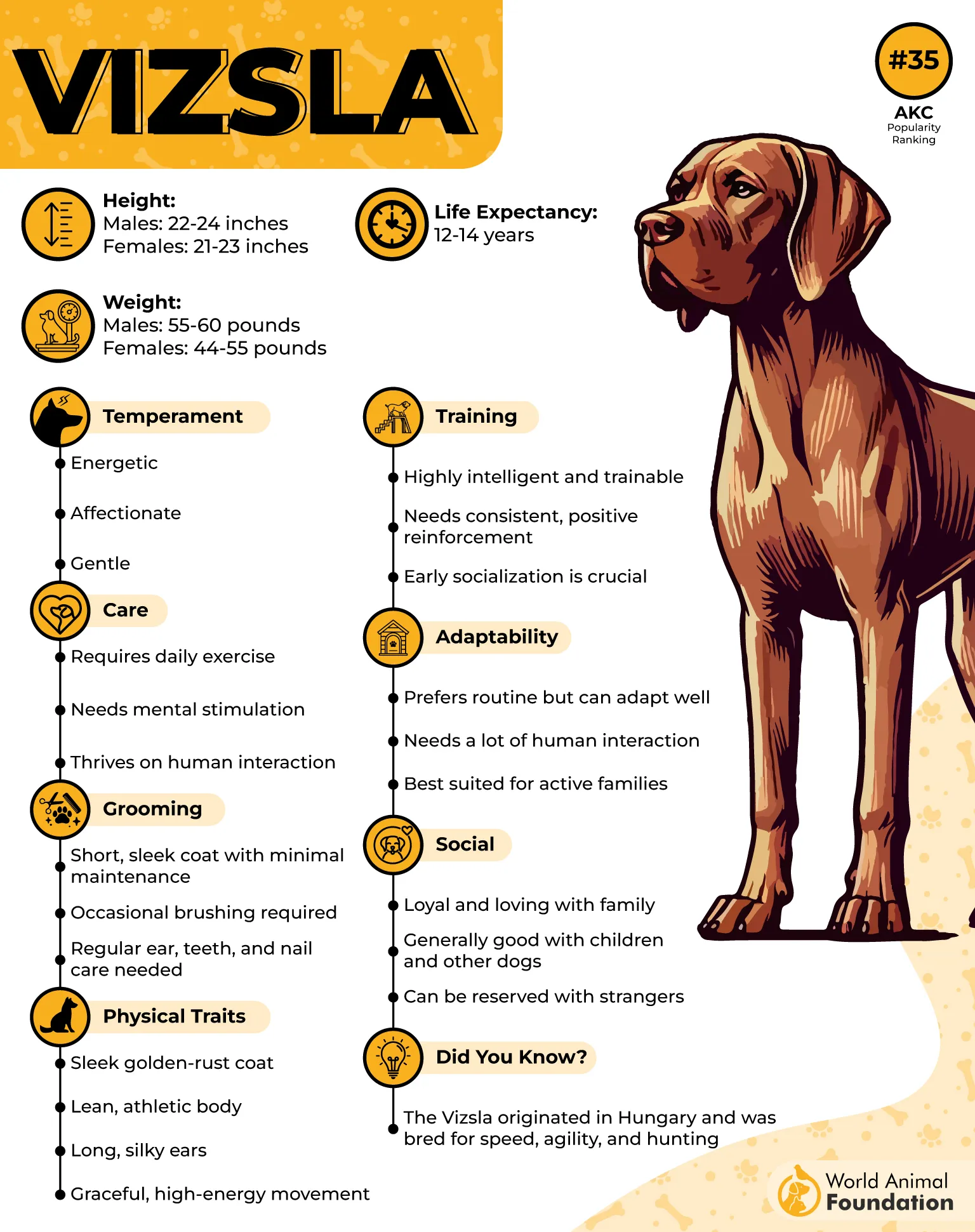
Often nicknamed the “Gift of Kings,” Vizslas were once prized by Hungarian nobility and even faced near extinction in the early 1900s, surviving through the dedication of passionate breeders. Today, they’re celebrated worldwide for their combination of speed, agility, and affectionate companionship.
In bird telemetry work, Vizslas excel due to their stamina and ability to cover wide ground quickly, making them effective for locating and flushing upland birds. Their strong prey drive and sensitivity to handler cues ensure they adapt well to diverse hunting conditions.
Training challenges include their high energy levels and emotional sensitivity. Vizslas bond deeply with owners, which can lead to separation anxiety if left alone too long. Consistent, patient training with positive reinforcement is key to balancing their drive and affection.
Hunters must also consider their short coat, which suits warmer climates but offers less protection in harsh terrain compared to heavier-coated breeds. Still, with proper conditioning and attention, Vizslas remain spirited, adaptable partners in both fieldwork and family life.
Fun Fact: By World War II, Vizslas spread beyond Hungary as refugees fled with their dogs, helping save the breed from extinction.
7. Wirehaired Pointing Griffon
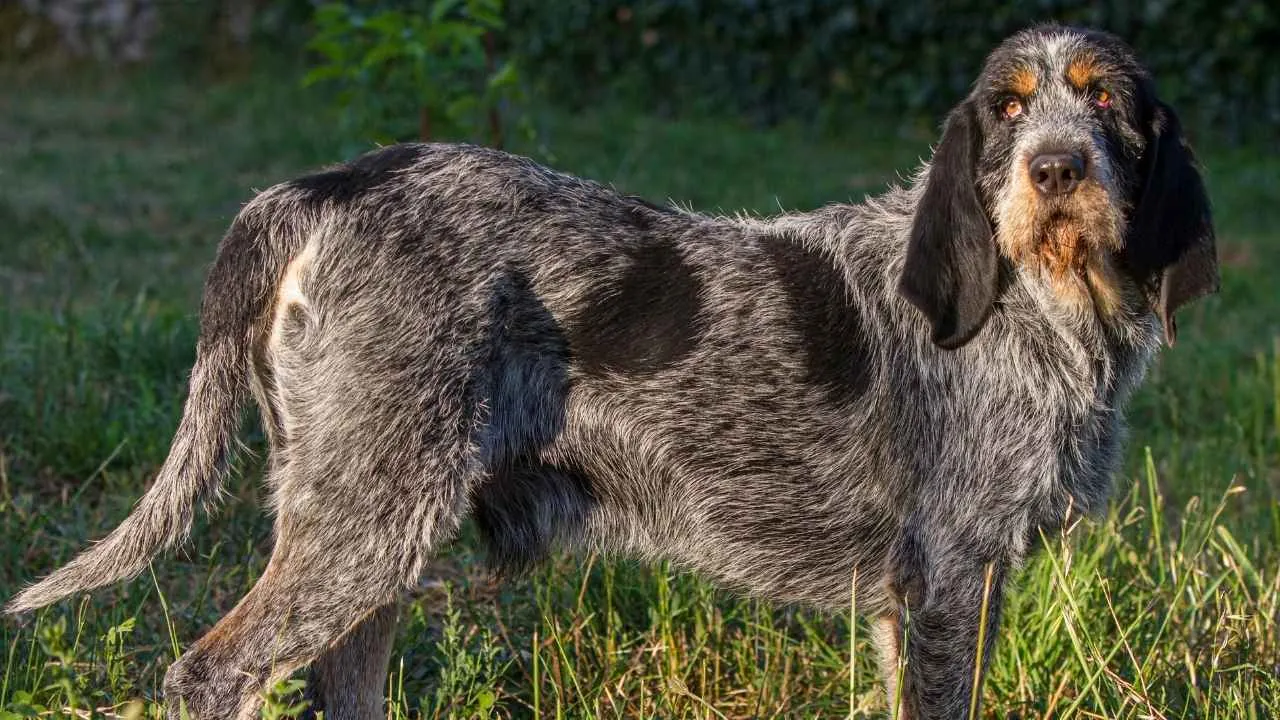
The Wirehaired Pointing Griffon—also known as the Korthals Griffon or Griffon d’arrêt à poil dur Korthals—was developed in the 19th century by Eduard Karel Korthals. Though its heritage spans the Netherlands, Germany, and France, it has become a recognized gun dog worldwide.
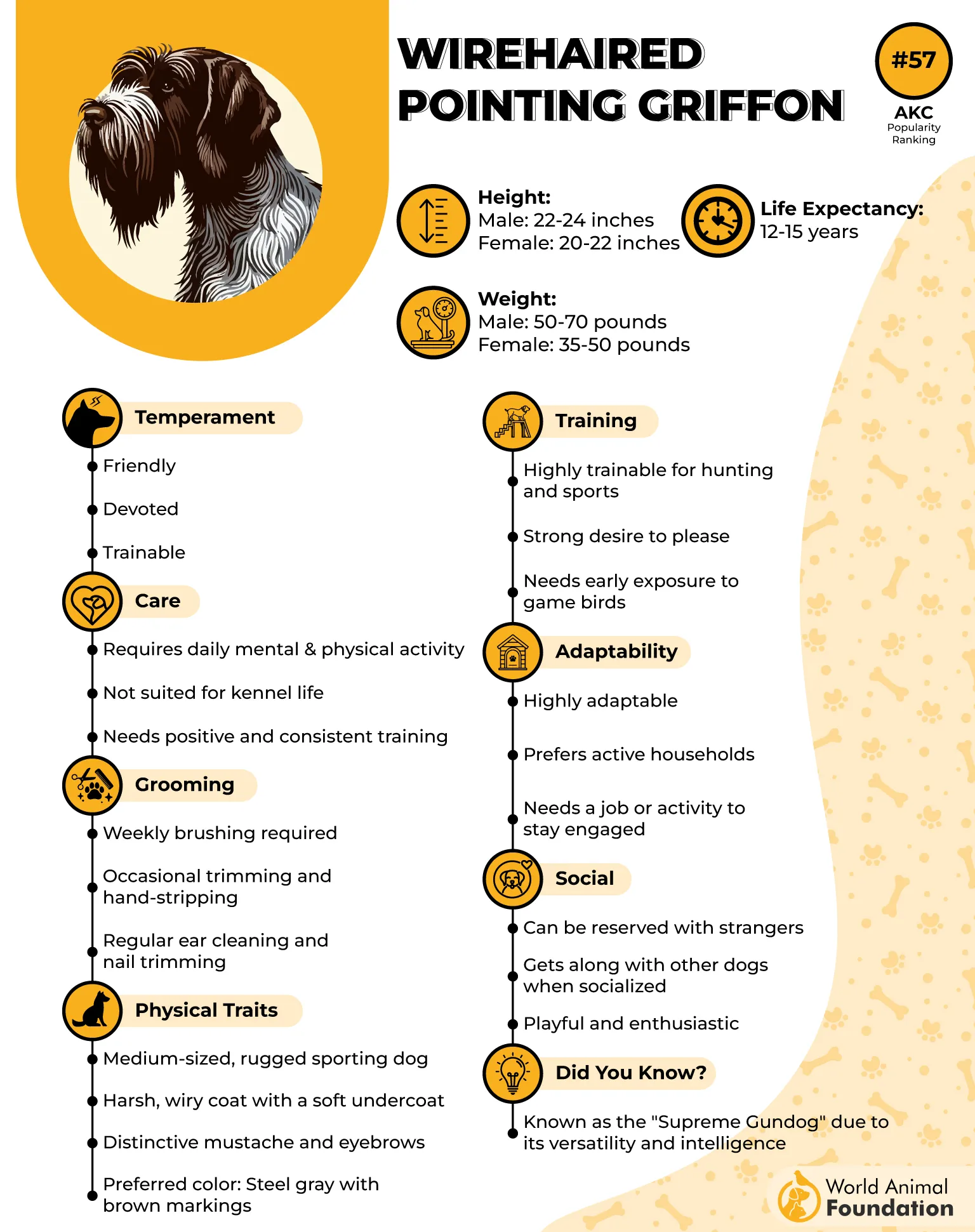
With nicknames like “the Griff” or even the “Gray Ghost,” this breed is instantly recognizable for its scruffy, low-shedding, wiry coat and expressive eyebrows. Its water-resistant fur, coupled with remarkable stamina, made it a versatile hunter across marshes, fields, and dense cover.
For bird telemetry, the Wirehaired Pointing Griffon is an exceptional choice. It combines a superb sense of smell with a careful, deliberate hunting style—traits that make tracking upland birds and waterfowl both efficient and reliable.
This breed is especially suited for hunters who want a multi-purpose telemetry partner. Their adaptability across terrains and eagerness to work closely with handlers ensure precise tracking while still maintaining range control, an invaluable skill for telemetry-assisted hunting.
Beyond the field, the Griff is affectionate, loyal, and highly trainable, offering the rare balance of a top-performing bird dog and a devoted family companion.
Fun Fact: The breed earned AKC recognition as early as 1887, yet remains relatively rare in the United States compared to other gundogs.
8. Boykin Spaniel
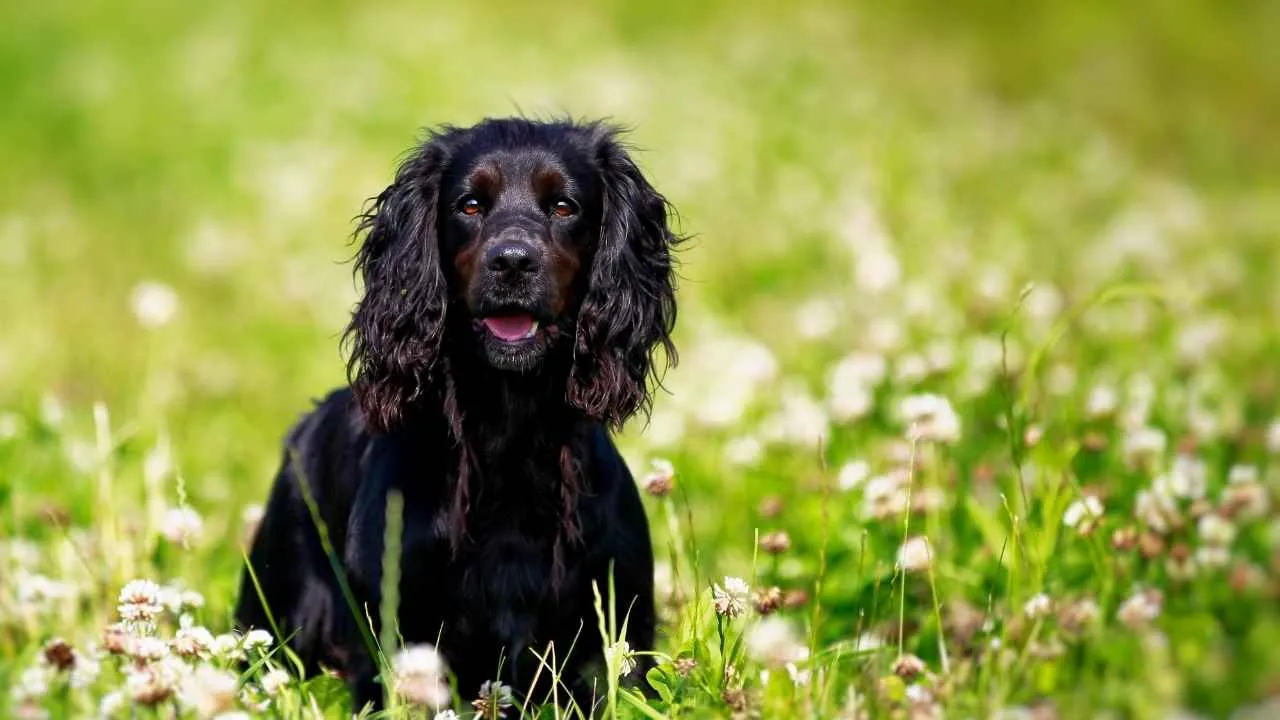
The Boykin Spaniel, often called the “Little Brown Dog” or simply “Boykin,” is the official state dog of South Carolina. Known for its rich chocolate coat and soulful eyes, this medium-sized spaniel was originally bred to hunt wild turkeys and waterfowl in the swamps and marshes of the state.

Larger and rangier than a Cocker Spaniel but smaller than a Springer, the Boykin has a compact, athletic build that makes it an efficient worker in tight cover and water alike. Its webbed feet and strong swimming ability add to its versatility in bird hunting.
For bird telemetry work, the Boykin is a natural fit. Their high energy, keen sense of smell, and innate retrieving instincts allow them to flush and recover birds efficiently. Their eagerness to please and trainability make them especially valuable when paired with modern telemetry devices.
Boykins are also excellent at working within a defined range, staying close to the hunter while covering ground quickly. This makes them well-suited for tracking collared or tagged birds in wetland and wooded habitats.
Fun Fact: Once considered South Carolina’s best-kept hunting secret, the Boykin Spaniel is now cherished nationwide as both a skilled field dog and a sweet-natured family companion.
9. German Wirehaired Pointer
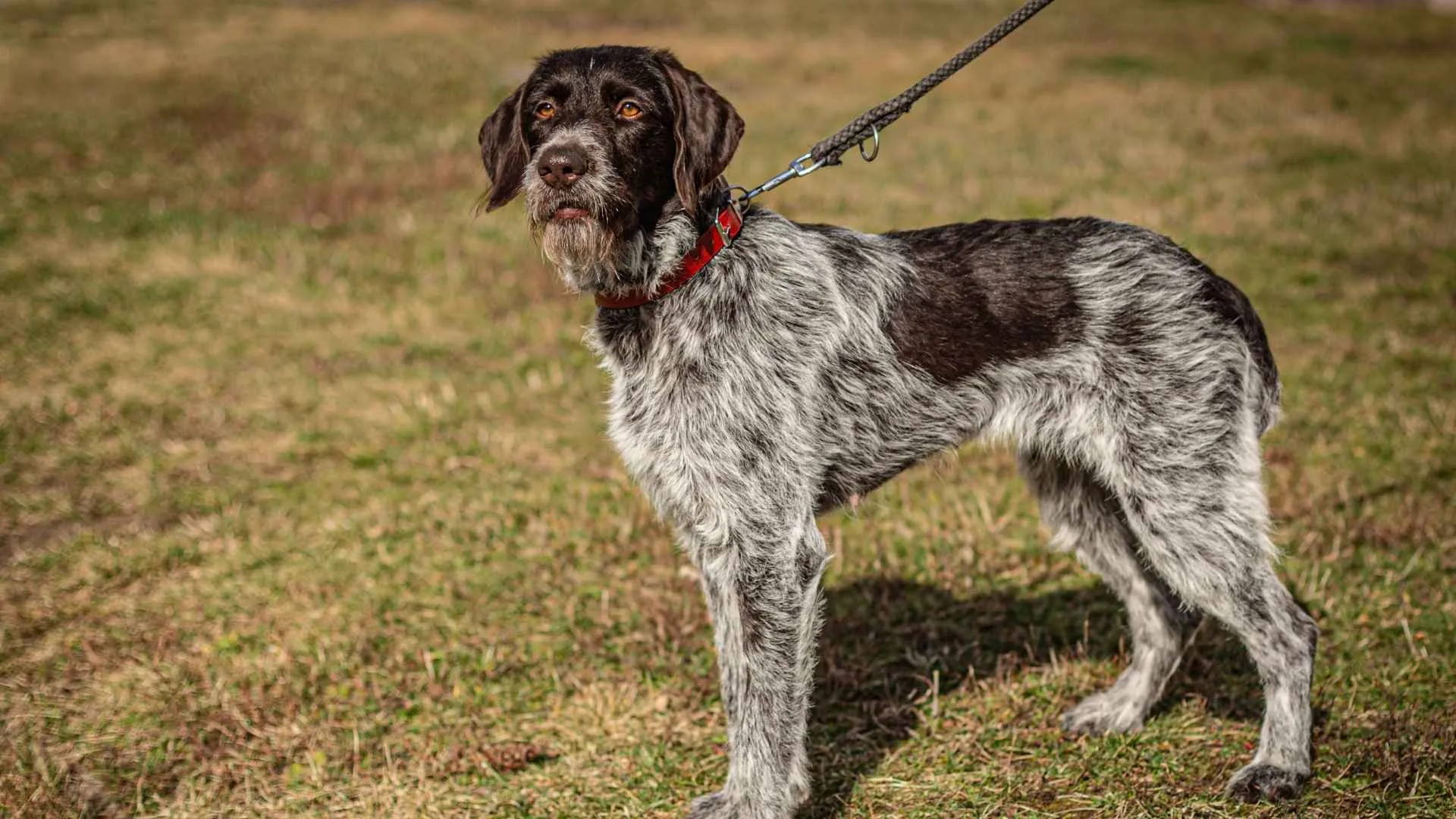
The German Wirehaired Pointer (sometimes abbreviated as GWP) is a griffon-type hunting dog developed in 19th-century Germany. Also known as the Deutsch Drahthaar, it was carefully bred by combining the Wirehaired Pointing Griffon, German Shorthaired Pointer, and Pudelpointer.
This sporting breed is medium-to-large with a distinctive coarse, wiry coat, bushy eyebrows, and a trademark beard. Its rugged appearance reflects its resilience, making it well-suited for outdoor work in various terrains and climates.
In the field, the German Wirehaired Pointer excels at versatility—pointing, flushing, and retrieving game with equal skill. Its webbed feet and hearty coat allow it to retrieve waterfowl from icy waters as effectively as tracking birds on dry land.
For bird telemetry, this breed’s stamina and intelligence shine. High energy levels, paired with keen scenting ability, help them track and retrieve birds reliably. Their eagerness to work and adaptability make them excellent partners for hunters using telemetry devices.
Despite their hardworking nature, GWPs are affectionate companions, forming strong bonds with their handlers.
Fun Fact: You may need to clean their beards often—especially after retrieving from water, where they’re notorious for dripping everywhere.
10. Bracco Italiano

The Bracco Italiano, also known as the Italian Pointer or Italian Pointing Dog, is one of the oldest pointing breeds, with origins tracing back to the 4th century B.C.
In its early history, this breed was used to flush birds into nets, later adapting to retrieve game once firearms became part of hunting traditions. Recognized by the American Kennel Club’s Sporting Group, the Bracco has remained a versatile bird dog in its homeland of Italy and beyond.

Distinguished by its sculpted head, long ears, and muscular frame, the Bracco stands out for its noble appearance and deliberate hunting style. Coat colors typically include white with orange or chestnut patches, and the breed is admired for both power and elegance. Though introduced to the U.S. in the late 20th century, the breed only gained full AKC recognition in 2022, marking its growing global popularity.
In the field, Bracco’s strong nose and deliberate pointing make it an asset for bird telemetry work. It methodically covers ground, alerting handlers to game while conserving energy for longer hunts. This measured approach makes it especially effective when tracking birds with GPS systems.
Training a Bracco requires consistency and patience, as this intelligent yet occasionally stubborn breed benefits from structured routines.
Positive reinforcement and early socialization ensure they balance their working instincts with a calm, manageable temperament at home. Their eagerness to bond with handlers makes them reliable partners both in training drills and real hunts.
Fun Fact: The Bracco Italiano was so revered in medieval Europe that it was often featured in paintings by Renaissance artists, showcasing its long-standing reputation as a noble hunting companion.
Conclusion
Bird telemetry requires dogs with not just stamina and skill, but also a deep partnership with their handlers. These breeds excel at pointing, flushing, and retrieving, turning every hunt into an enjoyable experience. Whether on a flat field or climbing a hill, the right dog will stay close, respond to a whistle, and help track down birds with precision.
In general opinion, these working companions make hunts more seamless, especially when you can hear their excitement as they close in on their quarry. For hunters, it’s reassuring to walk with a dog that’s steady, loyal, and reliable in the field.
Of course, not every outing is about birds—sometimes deer cross your path, and things just happen in the wild. But these breeds are adaptable and focused, staying tuned to the handler’s needs. They are, basically, more than just hunting tools; they’re true partners. For guys and families who value tradition, skill, and companionship, these dogs embody what makes bird telemetry both effective and rewarding.


